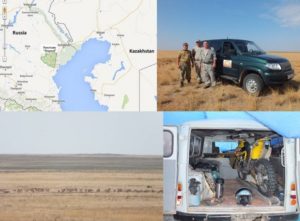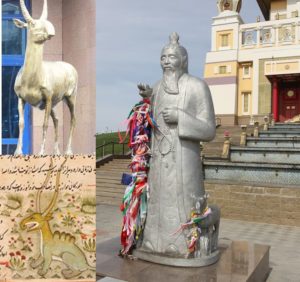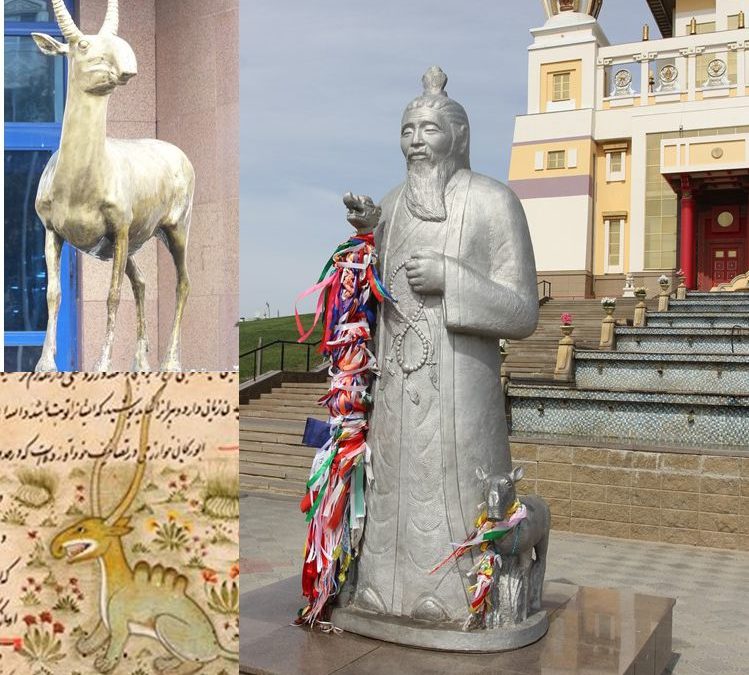Announcing the winners of the 2016 SCA Small Grants Programme, supported by the Convention on the Conservation of Migratory Species of Wild Animals.
This year we are pleased to be supporting three exciting projects proposed by local conservationists within the saiga’s range states. The saiga population of the North-West Caspian remains critically endangered, numbering about 3500 animals. Their main threat being poaching for their horns which are used in traditional Chinese medicine.
About 2000 of these saigas live within the boundaries of the Stepnoi Sanctuary in the Russian Federation’s Astrakhan region, an area of over 100 hectares. 50,000 hectares of which is exempt from grazing livestock, and is one of the reasons the sanctuary is able to provide areas perfectly suited to both the saiga’s rutting and calving periods.
Currently, a team of 10 rangers is always on duty, working around the clock to ensure that not only do poachers never harm a single saiga, but that the territory they live in is kept in optimum condition. Rangers carry out many duties from putting out wildfires, creating and maintaining critically needed watering holes, and patrolling the entire area for over grazing and incursions by farmers and poachers, to carrying out wildlife education events at their headquarters. All this goes on despite the extremes of temperature they encounter, which range from 40o in the summer to -35o in the winter!
 Thanks to the hard work of the rangers the sanctuary has a growing reputation as a centre for science and conservation of saigas and other wildlife in the region. To strengthen this important element of their work we will be funding a new portacabin. This will be placed inside the sanctuary and will act as a hub for visiting scientists, filmmakers and conservationists. The rangers will also be able to hold environmental education sessions there to inform local people about the important role the sanctuary plays in preserving their wildlife, and to inspire them to get involved in conservation.
Thanks to the hard work of the rangers the sanctuary has a growing reputation as a centre for science and conservation of saigas and other wildlife in the region. To strengthen this important element of their work we will be funding a new portacabin. This will be placed inside the sanctuary and will act as a hub for visiting scientists, filmmakers and conservationists. The rangers will also be able to hold environmental education sessions there to inform local people about the important role the sanctuary plays in preserving their wildlife, and to inspire them to get involved in conservation.
Bibigul Sarsenova, Chair of the Association ‘Society and Environment’, in the Republic of Kazakhstan, is another award winner. The award will enable her to review public attitudes to the challenge of conserving the Ural saiga population in Kazakhstan, which currently numbers around 70,000 animals.
She will be working with our colleagues at the ACBK in Kazakhstan and our local network of children’s Steppe Wildlife Clubs to identify the causes of poaching in the region and the attitudes local people hold towards the saiga.
Bibigul will also be working with these groups to carry out environmental education activiti es focused on the challenges facing these critically endangered antelopes, and will be reaching out to students of local schools, art groups, environmental organizations and public institutions, as well as looking to engage with new schools in the area with the aim of setting up new Steppe Wildlife clubs. Her project will also see her hosting guided tours at the Center for Wildlife and Conservation of Biodiversity in the Taskalinskom district of West Kazakhstan, where there is a new saiga captive breeding programme.
es focused on the challenges facing these critically endangered antelopes, and will be reaching out to students of local schools, art groups, environmental organizations and public institutions, as well as looking to engage with new schools in the area with the aim of setting up new Steppe Wildlife clubs. Her project will also see her hosting guided tours at the Center for Wildlife and Conservation of Biodiversity in the Taskalinskom district of West Kazakhstan, where there is a new saiga captive breeding programme.
Finally, a group of people from Kalmykia, Russia have been awarded our last Small Grant. Catherine Ochirova and Nadezhda Pyurvenova will be developing a booklet called ‘Saiga – living heritage of our ancestors’.
The saiga antelope is known to feature prominently in historic documents within its range. With many poems, songs, paintings and folklore having been produced about it over the ages.
This group will be working closely with our SCA colleagues in Kazakhstan and Russia, as well as with local teachers,  to produce a booklet which will be distributed to schools and libraries in the region. It will draw together historical works which illustrate how entwined saigas are in the cultural heritage of local people, and aims to inform and inspire people to conserve the species through highlighting the ancient links, symbolism and culture woven through a shared history.
to produce a booklet which will be distributed to schools and libraries in the region. It will draw together historical works which illustrate how entwined saigas are in the cultural heritage of local people, and aims to inform and inspire people to conserve the species through highlighting the ancient links, symbolism and culture woven through a shared history.
It will also educate the reader about modern day challenges facing saiga conservation, including the tragic story of the famous local ranger, Uldis Knakis who laid down his life to protect saigas. This powerful booklet will help people understand the importance of the species and the part everyone can play in its conservation.
Congratulations to all our award winners, we are looking forward to hearing more about your projects in the near future.

